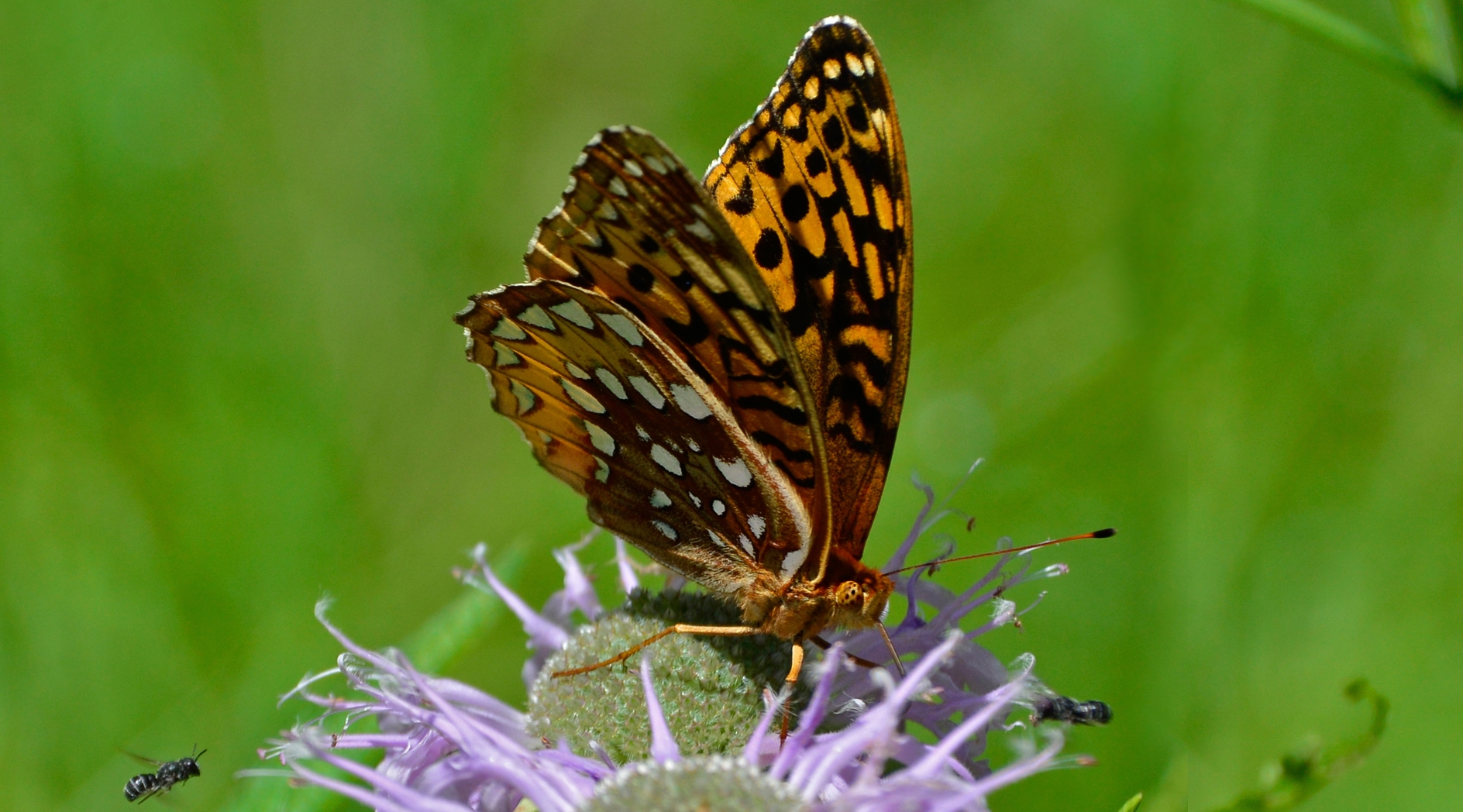Zusammenfassung
Der große Perlmutterfalter (Speyeria cybele) ist ein nordamerikanischer Schmetterling aus der Familie der Nymphalidae.
Stichworte
Wissenschaftliche Klassifizierung
Die Leute fragen oft
Beschreibung
Seine Flügelspannweite reicht von 62 bis 88 mm. Es zeichnet sich durch seine orange Farbe oben mit fünf schwarzen Strichen in der Nähe der Vorderflügelbasis und mehreren unregelmäßigen schwarzen Strichen an der Basis des Hinterflügels aus. Zusätzlich verlaufen zwei Reihen schwarzer Halbmonde entlang der Flügelkanten. Unten ist der Vorderflügel gelblich-orange mit schwarzen Flecken ähnlich der Oberseite, mit einigen silbernen Flecken an der Flügelspitze. Der Hinterflügel ist rotbraun mit silbernen Flecken an der Basis und in der Mitte des Flügels. Ein breites gelbes Band und silberne Dreiecke sind neben dem braunen Rand die bemerkenswertesten Eigenschaften des Flügels. Weibchen sind in der Regel dunkler als Männchen und Individuen aus den westlichen Bereichen dieser Art sind in der Regel heller orange. Ähnliche Arten sind der Aphroditen-Perlmutterfalter (Speyeria aphrodite), der Atlantis-Perlmutterfalter (Speyeria atlantis) und der nordwestliche Perlmutterfalter (Speyeria hesperis). Es unterscheidet sich von den Aphrodite- und Atlantis-Perlmutterfalterfalter durch ein breites helles submarginales Band am Hinterflügel und anstelle von schwarzen Flecken bilden sich schwarze Striche an den Rändern des Vorderflügels.

Unterart
Alphabetisch geordnet: - S. c. carpenterii (Edwards, 1876) - S. c. charlottii (Barnes, 1897) - S. c. cybele (Fabricius, 1775) - S. c. krautwurmi (Holland, 1931) - Krautwurmfalter - S. c. leto (Behr, 1862) - S. c. letona dos Passos und Grau, 1945 - S. c. novascotiae (McDunnough, 1935) - S. c. pseudocarpenteri (F. & R. Chermock, 1940) - S. c. pugetensis Chermock & Frechin, 1947

Palette
Der große Perlmutterfalter bedeckt ein breites Spektrum Nordamerikas, das sich von Südkanada über Nordkalifornien im Westen bis nach North Carolina im Osten erstreckt. Primärer Lebensraum für diese Art sind feuchte Wiesen und Waldränder.
Larvenwirt
Verschiedene einheimische Veilchenarten haben berichtet, dass sie als Larvennahrungspflanze für den Perlmutterfalter dienen, darunter das einheimische Rundblattveilchen (Viola rotundifolia), das Pfeilblattveilchen (Viola fimbriatula) und das gemeine Blauveilchen (Viola sororia).